Semester with Scott Week 2: Building A Fabric Collection
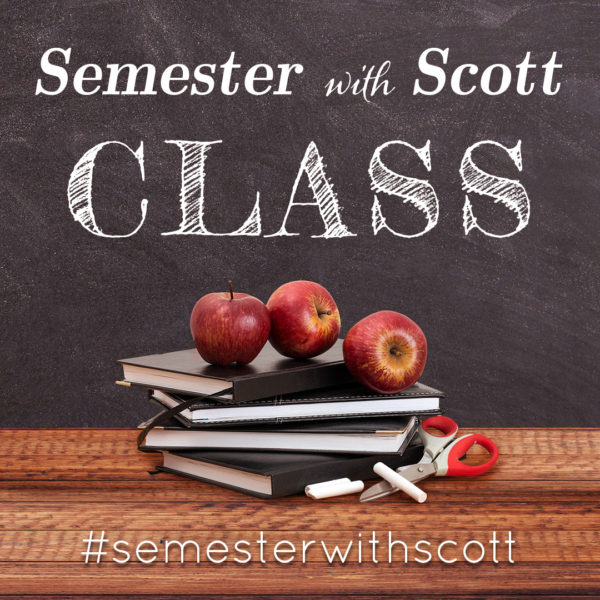
This is the second “Semester with Scott” blog post where I will be talking about building a fabric collection. Make sure to watch the class video on building a fabric collection this Wednesday, October 21, 2020 at 7:30 PM (EST) on my @jaftexpresident Facebook page. Please share my page and the videos with all your fabric loving friends. After that, be on the lookout for the Sunday weekly quiz where you will have the opportunity to win some great fabric prizes just for paying attention.
Have you ever wondered about what goes into constructing a fabric collection? Have you wondered why a quilting group is a certain size i.e. 10 skus (stock keeping units)? Have you wondered, why did they include that design? Wonder no more because I am going to generally cover this subject here today. Then I will follow it up Wednesday night with more elaborate details and visuals during the live course.
If you watched the video from this past week, you will recall how I showed various designs that we purchased from art sellers that visit our offices. I mentioned that the designs that we purchase have to be very elaborate and special to be worth paying for as they can cost between $500-$1000/design. I went even further to say that the purchased design needs to WOW us.
That WOW design is what we would typically refer to as the lead print. It is the design that leads the group to the higher land. It is the star.
The lead design might be a 24″ or 36″ panel, it might be an outstanding allover or a repeating block design. Once we have the lead print selected, we just need the rest of the line to well…fall into line.
The lead print needs a strong supporting cast i.e. sub-leads. Below the sub-leads, the line needs the coordinating and quiet prints that are necessary to round out the group and provide a little rest from the stars.
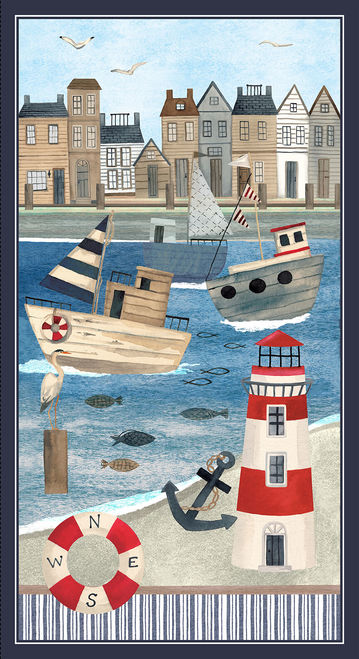
The lead is usually the largest of the designs. The most important of the supporting cast is the sub-lead or sub-leads. The sub-lead designs normally contain elements from the lead that were extracted and have some overlapping qualities with the lead. For example, if the lead was an elaborate seaside image like the one above, the sub-leads would contain the boats and everything on the skyline, but not all the intricate details like the fish and the birds.
As we move further down from the lead and sub-lead, we then move to some all-overs with single elements and more simplicity. Working with the seaside example above, the designs below the sub-leads may be all-overs of tossed boats on a ground color or something like the block design below that contains various overlapping elements with the lead. There could be lots of designs in this allover category that really help to beef up the size of the collection.
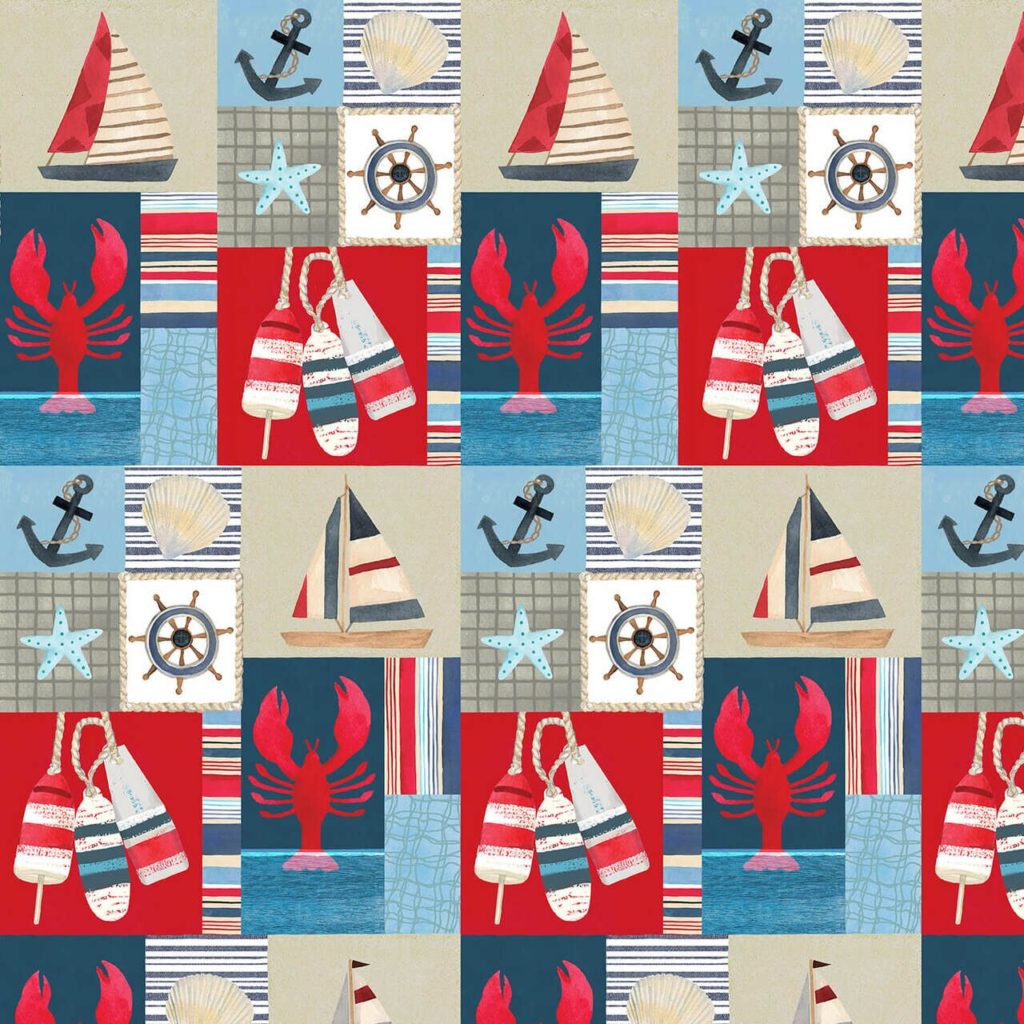
Working our way down from there, we go to the very simple prints that are relevant to the group, but don’t have too much going on like the small lobster and fish prints below. These would be the rest designs in your quilt that tone things down so everything isn’t so busy, wild and hard for the eyes to take in. Here, I like to think of stripes, dots, blenders, checks or very small elements from the lead design to name a few. These prints are usually the smallest in scale and the easiest to design.
That about sums up the structure of a group which you can think of like a pyramid. It starts with the lead on the top and works its way down to the coordinates at the bottom. After that, the only thing we need to do is determine how many color stories we will use in the group.
We don’t normally have more than two or three color stories in a group, but there are of course exceptions. Kaffe Fassett, for example, could have 8 colorations of his designs. On the other hand, we have lines that are in one single colorway. A lot of companies run three color ways because that was based on mill requirements of having to buy 1000 yards of a color and 3000 yards of a design. However, those rules don’t apply anymore.
There you have it folks. You can consider this the warm-up to the Wednesday night video on building a fabric collection. I look forward to seeing you all then.
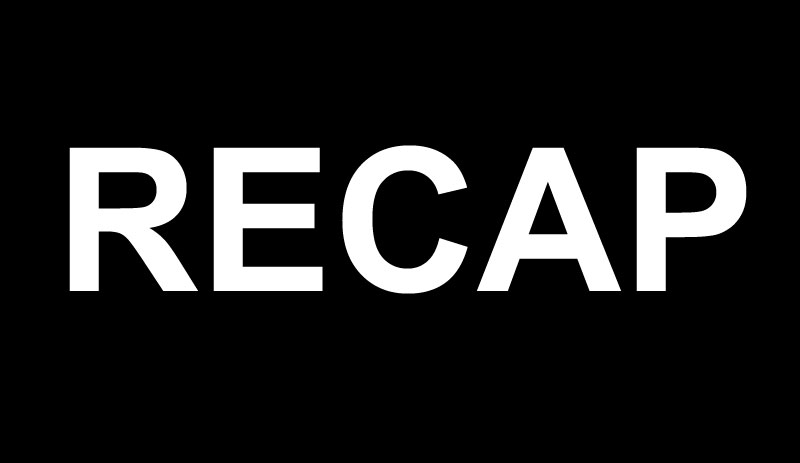
Here is a quick recap if you missed the first class:
- What is “Semester with Scott”? Read this.
- Here is a video of the first class on the fabric design process: Click here.
- Here is the reading material that aligns with the first course. Read How A Fabric Release is Born.
(P.S. There are quizzes with free fabrics as prizes!!! So it’s worth it.)



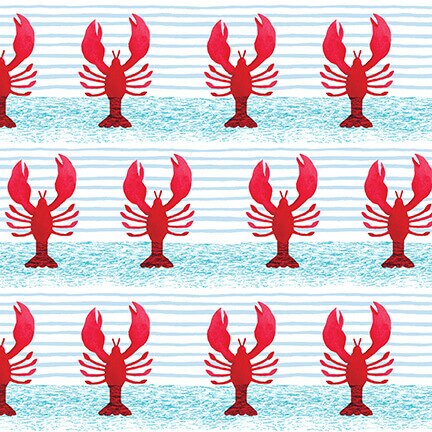
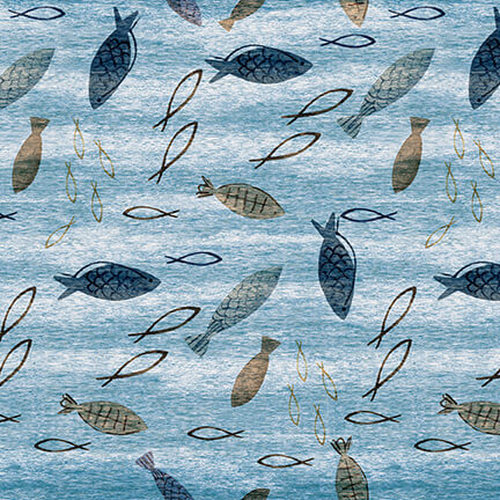
8 Comments
Kara E Benavides
Oh mercy! I am just getting a few moments to catch up on 3 weeks! Are there going to be essays or short answers, fill in the blanks, multiple choice on the tests? How should I study? Will you give a review? How many points is it worth? Will you grade on the curve? NO. I was not the one asking these questions. I read the syllabus. But will there be essays? (I always kill those – in a good way.(
Scott Fortunoff
Hi kara,
Being that I went to law school, you are free to write a brief or an essay. Send it to me when it is ready. The subject is fabric.
scott
Camille Sarivole
Your info is so educational and interesting. Makes me feel like the 3 careers I experienced in life should have Included textiles. Not sure if collecting fabrics is more rewarding than creating with fabrics. Love them both. It’s purely addicting. I’m now on the hunt to locate which shops carry an assortment of Jaftex lines. Not an easy task.
Scott Fortunoff
Hi Camille,
How are you? Thanks for the comment. Glad you are finding the info educational. I know that every time I teach consumers something that they appreciate it. I just want to keep that going. Have a great week.
Scott
Theresa Burton
Nice to have written info before the lesson.
Scott Fortunoff
Hi Theresa,
It’s just an overview. Hope this helps.
See you Wednesday at 730.
Scott
Stacy Murray
Is there a way to encourage designers to not make everything directional? For quilters, the “tossed” allovers are much easier to work with than prints that are directional, like the lobsters. A few tossed and one or two directionals would be better. It is great seeing the process of how lines come together! Thank you for sharing the insider view!
Scott Fortunoff
Hi Stacy,
Thanks for the comment. You are not the first to tell us this and we are working to get more non-directional skus where possible.
Take care,
Scott